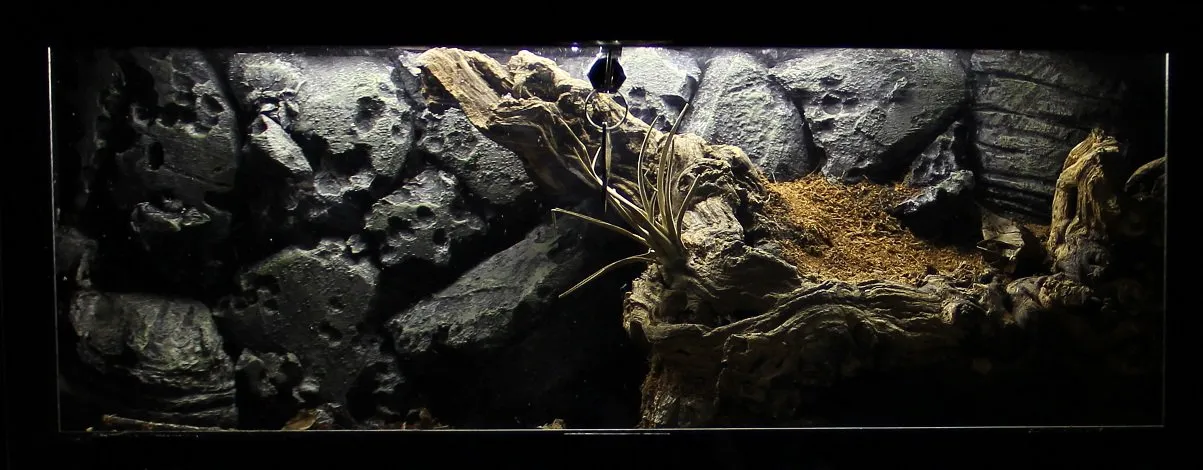Choosing the Right Pink Toe Tarantula Enclosure
Setting up a pink toe tarantula enclosure is a crucial step in providing your new pet with a comfortable and safe environment. The right enclosure not only ensures your tarantula’s well-being but also allows you to observe its fascinating behavior. This comprehensive guide will walk you through every aspect of creating the perfect habitat for your Avicularia avicularia, ensuring it thrives in its new home. From choosing the correct size and materials to maintaining optimal conditions, we’ll cover everything you need to know. A well-designed enclosure mimics the tarantula’s natural arboreal habitat, promoting its health and longevity.
Size Matters Optimal Enclosure Dimensions
The size of the enclosure is paramount for the well-being of your pink toe tarantula. A habitat that is too small can restrict movement and lead to stress, while one that is excessively large can make it difficult for your tarantula to find its food. The ideal enclosure provides ample space for climbing, web-building, and exploration. Consider the mature size of your tarantula when selecting an enclosure. It is better to start with a size that can accommodate your tarantula’s growth, minimizing the need for frequent enclosure changes. The enclosure should be tall, as pink toes are arboreal and spend a significant amount of time climbing and webbing in higher areas.
Considering Your Tarantula’s Size

For juvenile pink toes, a small, clear container, around 6x6x8 inches (length x width x height) can be a good start. As your tarantula grows, you’ll need to upgrade. For a fully grown adult, an enclosure measuring approximately 12x12x18 inches or larger is recommended. This size provides ample space for the tarantula to move around, build webs, and feel secure. Remember to factor in the space needed for substrate, decorations, and a water dish. Always prioritize height over width to cater to their arboreal nature. Overcrowding can lead to stress and potential issues with molting, while inadequate space can lead to stunted growth.
Material Selection Glass vs Acrylic
The choice of material for your pink toe tarantula enclosure is an important decision that can impact your tarantula’s health and your convenience. Two primary options exist: glass and acrylic. Each has its own set of pros and cons that you should carefully consider before making your purchase. Think about factors like visibility, insulation, ease of cleaning, and cost. The best material will depend on your personal preferences and your ability to maintain the enclosure properly. Both materials can be suitable, but understanding their differences will help you make the best decision for your specific needs and circumstances.
Glass Enclosures Pros and Cons
Glass enclosures are a popular choice due to their clarity and durability. They offer excellent visibility, allowing you to easily observe your tarantula. Glass is also relatively easy to clean and is resistant to scratches. However, glass enclosures are heavier than acrylic ones, making them less convenient to move around. Glass also has poor insulation properties, meaning temperature and humidity can fluctuate more easily. They can be more expensive than acrylic options, and may shatter if dropped or mishandled. When choosing glass, make sure it has secure ventilation and a tight-fitting lid to prevent escapes. Consider the environment where the enclosure will be placed and whether temperature stability is a priority.
Acrylic Enclosures Pros and Cons

Acrylic enclosures are a lighter alternative to glass, making them easier to handle and move. They offer excellent insulation, helping to maintain stable temperatures and humidity levels. Acrylic is also more resistant to shattering than glass, making it a safer option, especially if you have children or pets. The main drawback of acrylic is that it scratches more easily than glass, which can affect visibility over time. Acrylic enclosures can be more expensive up front, though their insulation properties may save you money on heating and humidity control. Overall, acrylic is a good option for tarantulas that appreciate a stable environment and are less prone to needing to move their enclosure.
Setting Up the Substrate A Pink Toe Tarantula’s Habitat
The substrate is a fundamental element of your pink toe tarantula’s enclosure, playing a critical role in maintaining humidity levels, providing a comfortable surface, and allowing your tarantula to construct its web. The right substrate composition is essential for your tarantula’s overall health and well-being. It should be absorbent, retain moisture, and provide a naturalistic environment. Choosing the right substrate will greatly improve the quality of life for your pink toe tarantula by providing a comfortable area to hide and move around in.
Ideal Substrate Composition
A good substrate for a pink toe tarantula should mimic its natural habitat. A mix of materials can provide the best balance of moisture retention, drainage, and aeration. Avoid using materials that can mold or decompose quickly. Aim for a substrate that supports the tarantula’s burrowing and web-building behaviors. By carefully selecting the components of the substrate, you can create an environment that is both aesthetically pleasing and functionally beneficial for your pet.
Coconut Fiber The Base
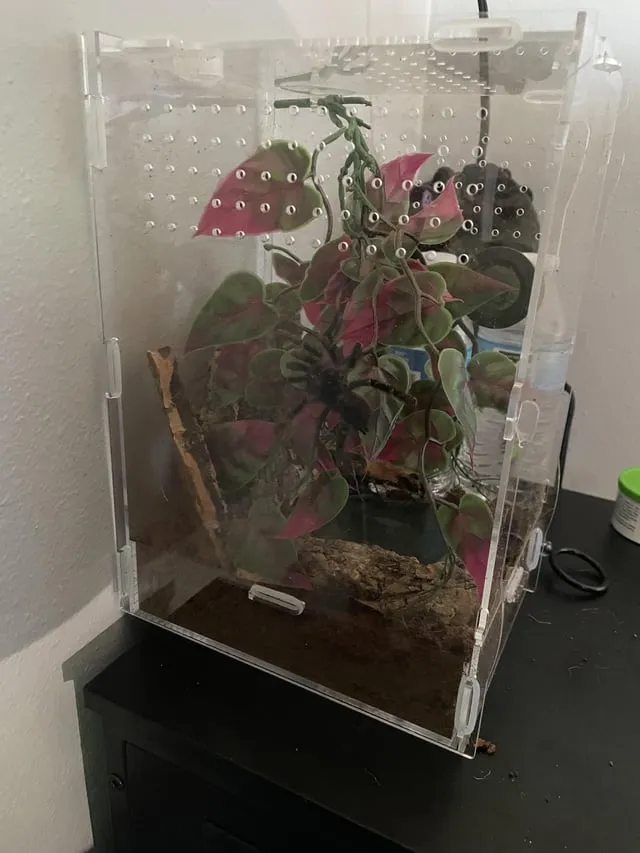
Coconut fiber, or coco coir, is an excellent base for your pink toe tarantula’s substrate. It’s highly absorbent, which helps to maintain the necessary humidity levels. Coco coir is also relatively lightweight, making it easy to manage. It provides a good texture for the tarantula to grip and move around on, and it helps to maintain the overall structure of the enclosure. Ensure you use a reptile-safe, washed coco fiber to avoid any potential harmful chemicals or parasites. Coco fiber also resists mold and mildew, further contributing to a healthy enclosure environment.
Sphagnum Moss Adding Humidity
Sphagnum moss is a valuable addition to the substrate, particularly for maintaining humidity in the enclosure. It has exceptional water-retention properties and can slowly release moisture into the air, which is crucial for the health of your pink toe tarantula. Place damp sphagnum moss in a corner of the enclosure or around the base of any decorations. Avoid over-saturating the moss, as this could lead to mold growth. The moss also adds a natural aesthetic to the enclosure and provides a comfortable place for the tarantula to rest and potentially web.
Leaf Litter For a Natural Touch
Adding a layer of dried leaf litter on top of the substrate creates a more naturalistic environment for your pink toe tarantula. It provides hiding places and encourages the tarantula to explore and exhibit its natural behaviors. Leaf litter also helps to maintain humidity and can contribute to the breakdown of waste, mimicking the ecosystem of their natural habitat. Choose leaves that are safe for reptiles and have been properly cleaned and dried. Oak and magnolia leaves are good options. Ensure the leaves are free of pesticides or chemicals, which could harm your tarantula.
Essential Enclosure Accessories
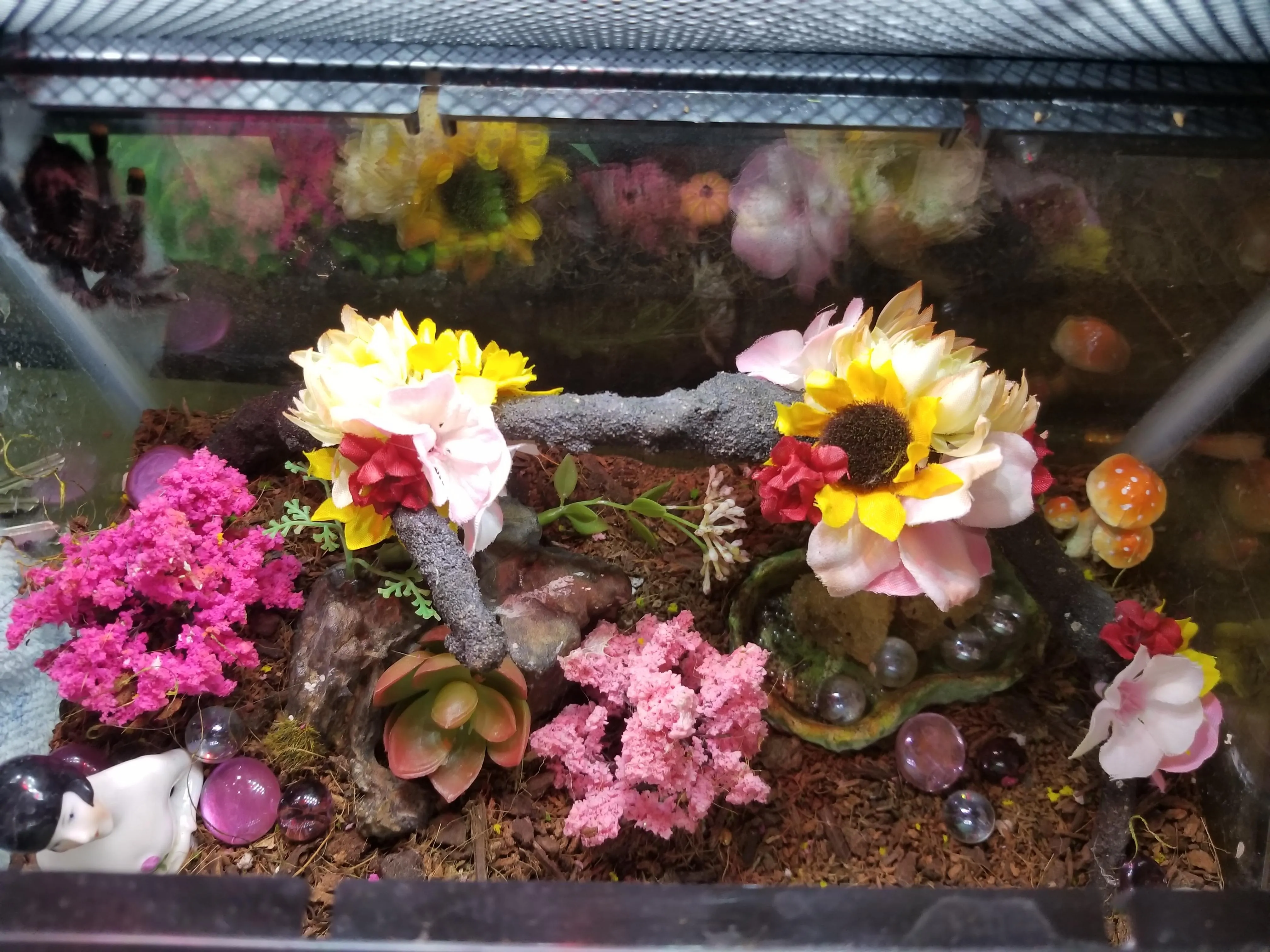
Beyond the enclosure itself and the substrate, several accessories are crucial for creating a suitable habitat for your pink toe tarantula. These accessories provide the necessary elements for hydration, shelter, and enrichment, contributing to the overall well-being of your pet. These essential items will provide the functional and aesthetic additions to your tarantula’s home. The right accessories not only make the enclosure more functional but also enhance the aesthetic appeal, contributing to a more enjoyable experience for both you and your tarantula.
Water Dish Hydration is Key
A shallow water dish is an absolute necessity for your pink toe tarantula. Provide fresh, clean water at all times to prevent dehydration. The water dish should be shallow enough to prevent the tarantula from drowning, but also large enough to be easily accessible. Ceramic dishes or shallow plastic containers work well. Remember to clean the water dish regularly to prevent the growth of bacteria and algae. Regularly check and replenish the water supply. Hydration is critical for the health and well-being of your tarantula, especially during molting.
Placement and Maintenance
Place the water dish in a location that is easily accessible to the tarantula, typically on the ground or slightly elevated. Monitor the water level and refill as needed, usually every one to three days. Clean the dish at least once a week with warm water and reptile-safe soap. This prevents the buildup of bacteria and other contaminants. Be sure to rinse the dish thoroughly before refilling it with fresh water.
Hides and Decorations
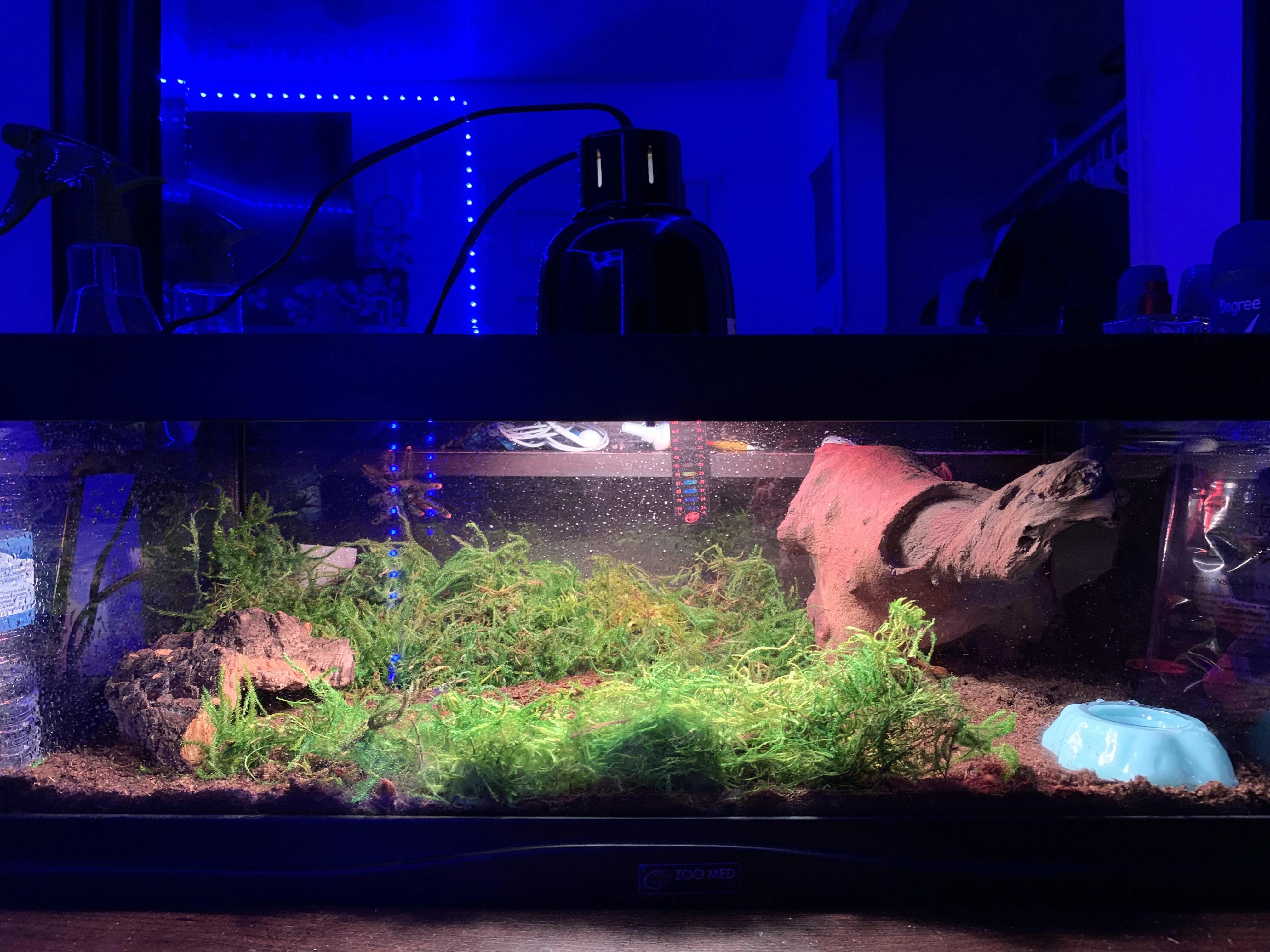
Provide your pink toe tarantula with hides and decorations to simulate its natural environment and offer a sense of security. This encourages the tarantula to feel safe and secure, which reduces stress and promotes healthy behavior. Hides and decorations add visual interest to the enclosure, making it more aesthetically pleasing. Selecting the right items and arranging them properly will help your tarantula thrive.
Choosing Appropriate Hides
Choose a hide that is the appropriate size for your tarantula. Cork bark, half logs, or commercially available reptile hides are excellent choices. Place the hide in a spot that the tarantula can easily access, providing a safe retreat. Ensure the hide is stable and won’t collapse, potentially injuring your pet. The hide should offer enough cover to allow your tarantula to feel secure. Rotate hide options periodically to keep your tarantula’s environment engaging and stimulating.
Adding Safe Decorations
You can add non-toxic plants, branches, and other decorations to the enclosure. Live or artificial plants can enhance the aesthetic appeal and provide additional hiding places. Ensure that any decorations are securely placed and won’t tip over. Clean decorations regularly to remove any dust or debris. Avoid using decorations that are sharp or have small parts that could be ingested. Natural branches that are reptile safe are also a good option. Consider the overall design of the enclosure to create a balanced and visually appealing environment.
Maintaining Optimal Enclosure Conditions
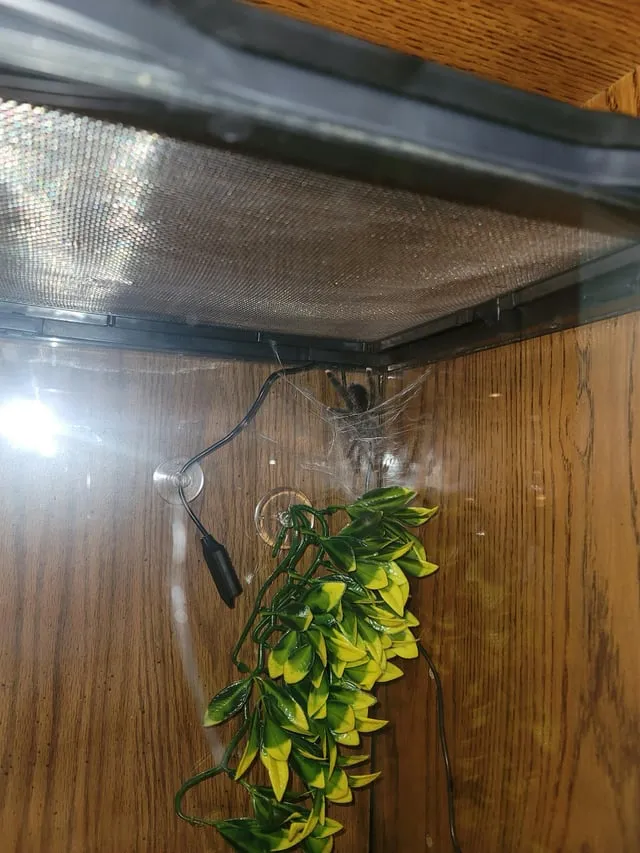
Maintaining the correct environmental conditions is vital for the health and well-being of your pink toe tarantula. This includes carefully managing temperature, humidity, and ventilation. These factors collectively create the right microclimate for your tarantula. Regular monitoring and adjustments are crucial to ensure the environment remains consistent and conducive to your tarantula’s needs.
Temperature and Humidity Requirements
Pink toe tarantulas thrive in specific temperature and humidity ranges. Maintaining these conditions is critical for their health and behavior. Using the right equipment and regularly monitoring your setup is important for a thriving tarantula. Invest in a good quality thermometer and hygrometer to track the conditions inside the enclosure. The temperature should be maintained between 75-80°F (24-27°C). Humidity levels should be maintained around 70-80%. Regular monitoring will ensure your pet’s optimal health.
Monitoring Temperature
Use a thermometer to regularly monitor the temperature inside the enclosure. Place the thermometer in a position that is representative of the overall temperature. Avoid placing the thermometer directly under a heat source, as this may provide an inaccurate reading. Make adjustments to the ambient temperature in the room or use a heat lamp to maintain the correct temperature range. It is critical to keep an eye on temperature fluctuations. Regular observation helps prevent issues caused by inconsistent temperatures.
Monitoring Humidity
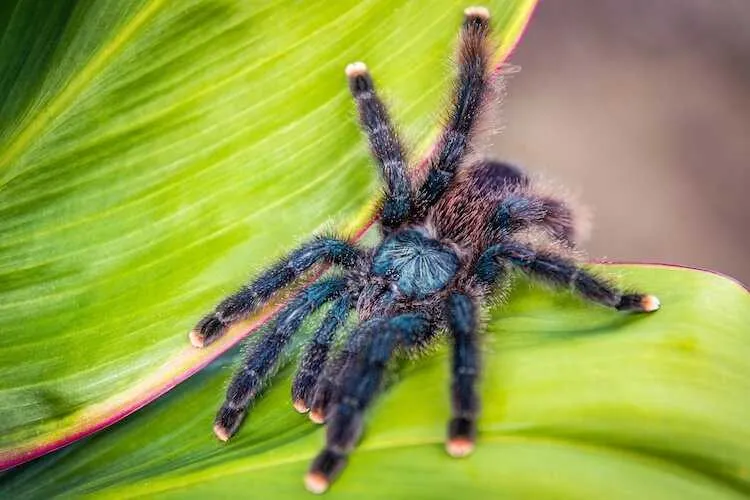
Use a hygrometer to monitor the humidity levels inside the enclosure. Place the hygrometer in a position that provides an accurate representation of the humidity. To increase humidity, mist the enclosure with dechlorinated water. Regularly check the substrate and add more water if needed. Ensure adequate ventilation to prevent mold growth. Monitoring humidity requires consistent attention and adjustment. Using a misting bottle provides a convenient method for raising humidity when necessary.
Ventilation and Airflow
Proper ventilation and airflow are essential for maintaining a healthy enclosure. Adequate ventilation prevents the buildup of mold and mildew, which can be harmful to your tarantula. Correct ventilation is vital for maintaining a healthy environment. The right ventilation will keep the enclosure fresh, which is important for preventing respiratory issues and promoting overall health.
Why Ventilation is Important
Good ventilation prevents the buildup of stagnant air, which can lead to the growth of harmful bacteria and fungi. It helps regulate humidity by preventing excessive moisture buildup, which can damage the tarantula’s health and its enclosure. Ventilation also promotes gas exchange, ensuring the air is fresh and contains sufficient oxygen. Without adequate ventilation, your tarantula can develop health problems. Adequate airflow is critical for overall well-being.
How to Ensure Proper Ventilation
Ensure that your enclosure has ventilation holes. For glass or acrylic enclosures, this usually means having holes in the top and sides of the enclosure. Place ventilation holes in strategic locations to allow for good airflow. Regular observation of the enclosure conditions is necessary to ensure that the ventilation is performing adequately. Too much ventilation can decrease humidity, while too little can lead to the buildup of moisture. Make adjustments as needed to keep the environment ideal.
